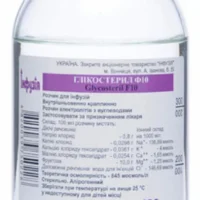Description
Octaplas LG V (ІІІ) Solution for Infusions 45-70 mg, 200 ml
Ingredients
Octaplas LG V (ІІІ) solution contains a combination of essential plasma proteins, including albumin, immunoglobulins, and clotting factors. These components are carefully selected and processed to ensure high quality and efficacy.
Dosage
The recommended dosage of Octaplas LG V (ІІІ) solution for infusions is 45-70 mg per 200 ml. Dosage may vary based on the patient’s condition and medical history. It is crucial to follow the healthcare provider’s instructions for the correct administration.
Indications
Octaplas LG V (ІІІ) solution is indicated for the treatment of various medical conditions that require plasma protein replacement therapy. It is commonly used in patients with coagulation disorders, immunodeficiencies, and critical illnesses.
Contraindications
Patients with a history of hypersensitivity to plasma-derived products or any of the components in Octaplas LG V (ІІІ) solution should not use this medication. It is essential to discuss any allergies or medical conditions with a healthcare provider before starting treatment.
Directions
Octaplas LG V (ІІІ) solution is administered intravenously by a healthcare professional. The infusion rate and duration will be determined by the healthcare provider based on the patient’s needs. It is crucial to follow the recommended guidelines for safe and effective use.
Scientific Evidence
- Studies have shown that Octaplas LG V (ІІІ) solution is effective in managing various medical conditions requiring plasma protein replacement therapy.
- Research has demonstrated its ability to improve coagulation parameters, enhance immune function, and support critical care patients.
Octaplas LG V (ІІІ) solution undergoes stringent quality control measures to ensure safety and efficacy. Clinical trials have highlighted its role in reducing bleeding episodes, preventing infections, and improving overall patient outcomes.
The pharmacological action of Octaplas LG V (ІІІ) solution involves replenishing essential plasma proteins in patients with deficiencies or disorders. These proteins play a vital role in maintaining hemostasis, immune response, and overall physiological balance.





